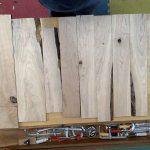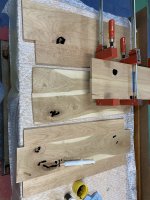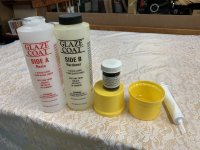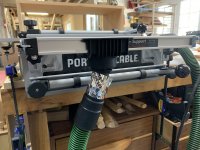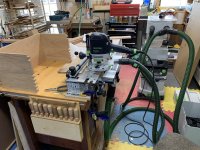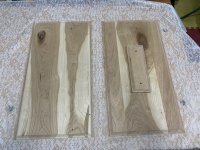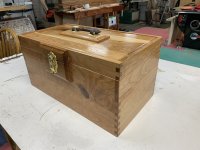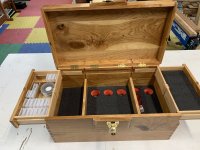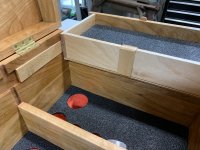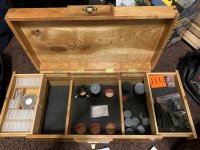[member=72891]AstroKeith[/member] (and any other woodworker/astronomers), a question related to super-accurate woodworking for astronomy.
I have an Apertura (rebranded Zuhmell) 8" Newtonian scope. I've been thinking about adding scales for azimuth and altitude that I can use to get the scope pointed in approximately the right direction without adding electronic controllers. I have a couple of ideas.
Altitude. My first inclination (bad pun) was to use a manual, homemade inclinometer. Then I thought about a Wixey digital angle gauge. The digital angle gauge should be accurate to better than 1/2 degree (one woodworker reported 12 arc minutes), which I think would be fine with me, and already has the magnets to attach to the tube. To zero the gauge, I wouldn't even have to level the base, just the tube, which I would do with a level. I'm not sure how accurate this step would be, but I would think I could get that to within 1/2 degree, for an overall error of less than 1 degree. While that's not good enough for zeroing in on an object (or for a good 90 degree table saw cut), it should be fine for making sure that I'm in the right general neighborhood. The alternative to the Wixey would be wooden inclinometer that would attach to the tube with rare-earth magnets, but it's hard to imagine that I could make a smallish one with more accuracy than the Wixey gauge.
Azimuth is a thornier problem. I'm thinking of building a "secondary" 1" thick Baltic Birch base that my Dobsonian "primary" base would fit on The secondary base would have a raised ring with an azimuth scale, and the primary base would have a pointer at 90 degrees to the axis of rotation of the tube. I believe I can get at least 1/2 degree accuracy on the scale. The problem is getting north on the scale aligned with true north, which I would also want to do to within 1/2 degree. Any ideas would be appreciated. I would try to build a robust levelling mechanism into the secondary base, so that I could depend on a flat surface for the primary base.
My inspiration is Tycho Brahe's set of instruments. Apparently he was able to build instrument for measuring altitude and azimuth that were accurate to 2-6 arc minutes, depending on the instrument. The instruments were built of wood and brass, and had scales on the order of 5 to 6 foot radius. That seems like a worthy woodworking challenge for pushing the limits of naked eye observation. (Some people think that Kepler did some underhanded scheming to get hold of Tycho's 30 years of measurements, they were so good.) I don't know if I'll ever try to build something on that scale, but it seems like solving some basic problems for my Dobsonian mount would be a good first step.
At any rate, since you have tackled some thorny telescope mounting problems, I thought you might have some insight into what I'm thinking.
Also, fires are all 100% contained now, viewing is much better.


